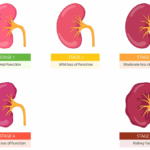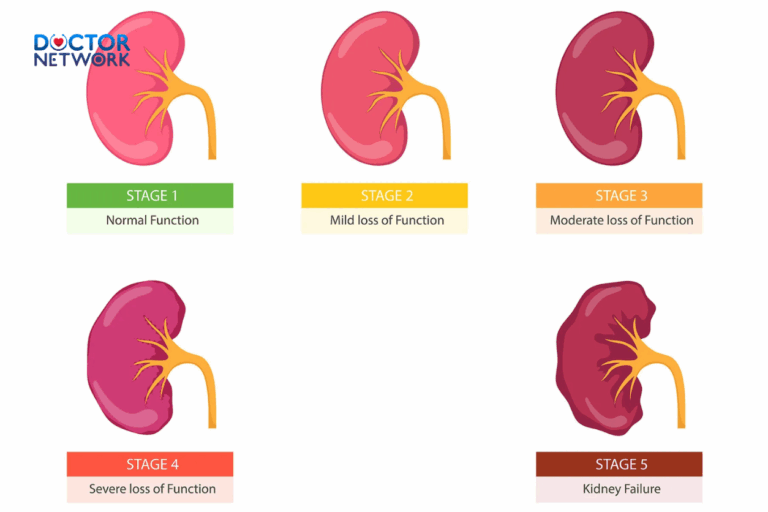Does Phentermine Burn Fat or Just Suppress Appetite? – Phentermine stands as one of the most prescribed anti-obesity medications, yet confusion persists about its primary mechanism of action. Does this pharmaceutical intervention directly burn adipose tissue, or does it primarily function through appetite suppression? This medical analysis definitively explains phentermine’s neurochemical mechanisms, clarifies misconceptions about fat-burning properties, and establishes realistic therapeutic expectations.
This comprehensive guide examines phentermine’s appetite-suppressing effects, explores eligibility criteria, addresses potential adverse reactions, and emphasizes the critical importance of lifestyle modifications for sustainable weight management outcomes.
The Core Mechanism: Primarily Appetite Suppression
Phentermine’s primary therapeutic effect centers on appetite suppression rather than direct lipolysis or metabolic enhancement. This prescription medication modulates specific neurotransmitter systems within the central nervous system, particularly targeting hypothalamic regions responsible for hunger regulation and satiety signaling.
The drug influences release and availability of key neurotransmitters—norepinephrine and dopamine—within critical brain structures. Norepinephrine functions as both neurotransmitter and hormone, activating sympathetic nervous system responses and promoting satiation feelings. Dopamine contributes to reward pathways, influencing food-seeking behaviors and pleasure responses associated with eating.
When phentermine stimulates these neurotransmitters, it effectively dampens hunger signals and enhances satiety responses. This neurochemical modification creates reduced food intake, earlier meal fullness, and decreased inter-meal cravings.

Does Phentermine Burn Fat or Just Suppress Appetite? Understanding How It Works for Weight Loss
Clarifying the Fat-Burning Distinction
Phentermine does not function as a direct fat-burning agent despite its widespread obesity treatment use. The medication’s primary benefit stems from appetite suppression rather than enhanced lipolysis, increased metabolic rate, or direct adipocyte mobilization.
Understanding this distinction proves crucial for appropriate patient expectations. Weight loss occurs when phentermine users consume fewer calories than required for daily energy expenditure, creating sustained caloric deficit. The medication facilitates this deficit by reducing hunger sensations, making portion control achievable. Subsequently, the body utilizes stored energy reserves, including fat, to meet metabolic demands.
Key Mechanistic Differences:
- Appetite Suppression: Direct CNS neurotransmitter modulation → reduced caloric intake
- Fat Burning: Enhanced metabolic rate → direct adipose tissue mobilization (not phentermine’s primary effect)
Classification and Additional Effects
Phentermine belongs to the sympathomimetic stimulant class, producing several secondary benefits beyond appetite suppression:
- Energy Enhancement: Increased alertness and physical energy supporting exercise adherence
- Mood Stabilization: Improved motivation and reduced depression symptoms
- Cognitive Benefits: Enhanced focus and decision-making capabilities
- Cardiovascular Stimulation: Increased heart rate and blood pressure requiring monitoring
| Effect Category | Primary Benefits | Clinical Significance |
|---|---|---|
| Appetite Control | Reduced hunger, enhanced satiety | Primary therapeutic mechanism |
| Energy/Mood | Increased alertness, motivation | Supports lifestyle changes |
| Cognitive Function | Improved focus, decision-making | Aids dietary compliance |
Prescription Eligibility and Criteria
Phentermine requires valid prescription from licensed healthcare providers and targets specific patient populations:
BMI Requirements:
- BMI ≥ 30 kg/m² (obesity classification)
- BMI ≥ 27 kg/m² with comorbidities (diabetes, hypertension, dyslipidemia)
Medical Assessment Process:
- Cardiovascular evaluation (blood pressure, heart rate, ECG when indicated)
- Psychiatric screening (mental health history, substance abuse risk)
- Comprehensive medical history review
- Risk-benefit analysis for individual patients
Healthcare providers must consider cardiovascular health, psychiatric history, and concurrent medical conditions before prescribing.
Short-Term Use Rationale
Phentermine is exclusively prescribed short-term (typically ≤12 weeks) due to several clinical considerations:
Tolerance Development: Extended use leads to reduced therapeutic efficacy as neurotransmitter systems adapt to chronic stimulation.
Cardiovascular Safety: Prolonged sympathomimetic exposure increases risks of sustained hypertension, cardiac arrhythmias, and coronary complications.
Dependence Prevention: Limited duration reduces psychological dependence and substance abuse potential.
Lifestyle Integration: Medication serves as catalyst for sustainable behavior changes rather than permanent solution.
Essential Lifestyle Integration
Phentermine achieves optimal outcomes only when integrated with comprehensive lifestyle modifications emphasizing dietary changes and increased physical activity.
Dietary Integration:
- Structured meal planning with appropriate portion control
- Emphasis on nutrient-dense, whole foods
- Regular meal timing optimizing appetite suppression benefits
- Adequate hydration supporting overall health
Exercise Enhancement:
- Gradual activity progression appropriate for fitness levels
- Combination cardiovascular and resistance training
- Professional guidance ensuring safe program development
Behavioral Modification:
- Stress management techniques unrelated to food consumption
- Sleep hygiene optimization for hormonal balance
- Long-term goal setting and progress monitoring
Managing Side Effects and Risks
Common Side Effects:
- Dry Mouth: Managed through increased hydration, sugar-free gum
- Insomnia: Prevented by early morning dosing, consistent sleep schedules
- Constipation: Addressed with increased fiber intake, adequate fluids
- Blood Pressure Elevation: Requires regular cardiovascular monitoring
Serious Risks Requiring Immediate Attention:
- Cardiovascular complications (chest pain, irregular heartbeat)
- Psychiatric symptoms (severe anxiety, mood changes)
- Signs of dependence or abuse patterns
Contraindications:
- Uncontrolled hypertension
- Coronary artery disease
- History of substance abuse
- Pregnancy/breastfeeding
- Concurrent MAO inhibitor use
Practical Usage Guidelines
Administration Best Practices:
- Take early morning (before breakfast or 1-2 hours after)
- Follow exact prescribed dosage—never exceed recommendations
- Maintain consistent daily timing for optimal therapeutic levels
Safety Monitoring:
- Regular blood pressure and heart rate tracking
- Prompt reporting of concerning symptoms
- Avoidance of concurrent stimulants (excessive caffeine)
| Essential Guidelines |
|---|
| Early morning administration prevents sleep disruption |
| Exact dosage adherence maximizes safety |
| Regular cardiovascular monitoring ensures health |
| Integration with diet/exercise programs optimizes results |
Post-Treatment Planning
Successful phentermine therapy requires comprehensive post-treatment planning for sustained weight maintenance:
Critical Elements:
- Behavioral Consolidation: Reinforcement of healthy eating patterns developed during treatment
- Exercise Continuation: Transition to self-directed physical activity programs
- Support System Activation: Ongoing healthcare provider, nutritionist, or support group connections
- Monitoring Systems: Self-monitoring tools and regular check-in schedules
Many patients experience weight regain after discontinuation, making post-treatment planning essential for long-term success.
Conclusion

Phentermine functions primarily as an appetite suppressant rather than direct fat-burning agent, achieving weight loss through reduced caloric intake via neurotransmitter modulation. This short-term prescription medication serves as therapeutic catalyst for comprehensive lifestyle modifications rather than standalone solution.
Success requires integration with structured dietary changes, increased physical activity, and behavioral strategies continuing beyond pharmaceutical intervention. Healthcare providers must carefully evaluate patient suitability, monitor cardiovascular safety, and establish comprehensive post-treatment maintenance plans.
Understanding phentermine’s true mechanism—appetite suppression rather than fat burning—enables realistic expectations and optimal integration into individualized weight management strategies. The medication’s greatest value lies in making difficult lifestyle changes achievable during critical early stages of comprehensive obesity treatment programs.
5 common questions about “Does phentermine burn fat or just suppress appetite?”
Does phentermine burn fat directly or just suppress appetite?
Phentermine mainly suppresses appetite, helping you eat less. It doesn’t directly burn fat but leads to fat loss by creating a calorie deficit.How does phentermine help with weight loss?
It stimulates the nervous system to reduce hunger signals, making you feel full sooner and eat less.How effective is phentermine for weight loss?
When combined with diet and exercise, it can help reduce body weight by about 3-5% in 12 weeks.Is phentermine addictive or does it have side effects?
It can cause side effects like dry mouth, insomnia, and increased heart rate. It’s not strongly addictive if used properly but should be taken under medical supervision.Is phentermine a miracle weight loss drug?
No, it’s a short-term aid that works best with lifestyle changes and isn’t suitable for everyone.
Scientific Evidence
Mechanism of Action (Appetite Suppression):
Drugs.com – “Phentermine”: States, “Phentermine is an appetite suppressant… It works by stimulating the central nervous system (nerves and brain), which increases your heart rate and blood pressure and decreases your appetite.”
Mayo Clinic – “Phentermine (Oral Route)”: Describes it as an appetite suppressant used with diet and exercise for obesity.
Indirect Fat Loss (Not Direct Fat Burning):
While phentermine can cause a slight increase in metabolic rate due to its stimulant properties, this effect is generally considered minor compared to the calorie deficit created by appetite suppression. There’s no strong evidence it directly targets fat cells (lipolysis) in a significant way independent of calorie reduction.
Kang, J. G., & Park, C. Y. (2012). Anti-Obesity Drugs: A Review about Their Effects and Safety. Diabetes & Metabolism Journal, 36(1), 13–25.
Content: This review discusses phentermine’s role as an anorectic (appetite-reducing) agent. The focus is on its impact on food intake.
Source (PubMed Central for full text): https://pmc.ncbi.nlm.nih.gov/articles/PMC3283823/
Hendricks, E. J. (2017). A reevaluation of an old appetite suppressant: Phentermine. Bariatric Times, 14(3), 10-14. (Often requires subscription or institutional access, but abstracts confirm focus on appetite suppression).
General search for abstract/info: Search “Hendricks EJ Phentermine Bariatric Times” on Google Scholar. The core mechanism discussed is appetite suppression.
Kiểm Duyệt Nội Dung
More than 10 years of marketing communications experience in the medical and health field.
Successfully deployed marketing communication activities, content development and social networking channels for hospital partners, clinics, doctors and medical professionals across the country.
More than 6 years of experience in organizing and producing leading prestigious medical programs in Vietnam, in collaboration with Ho Chi Minh City Television (HTV). Typical programs include Nhật Ký Blouse Trắng, Bác Sĩ Nói Gì, Alo Bác Sĩ Nghe, Nhật Ký Hạnh Phúc, Vui Khỏe Cùng Con, Bác Sỹ Mẹ, v.v.
Comprehensive cooperation with hundreds of hospitals and clinics, thousands of doctors and medical experts to join hands in building a medical content and service platform on the Doctor Network application.

























